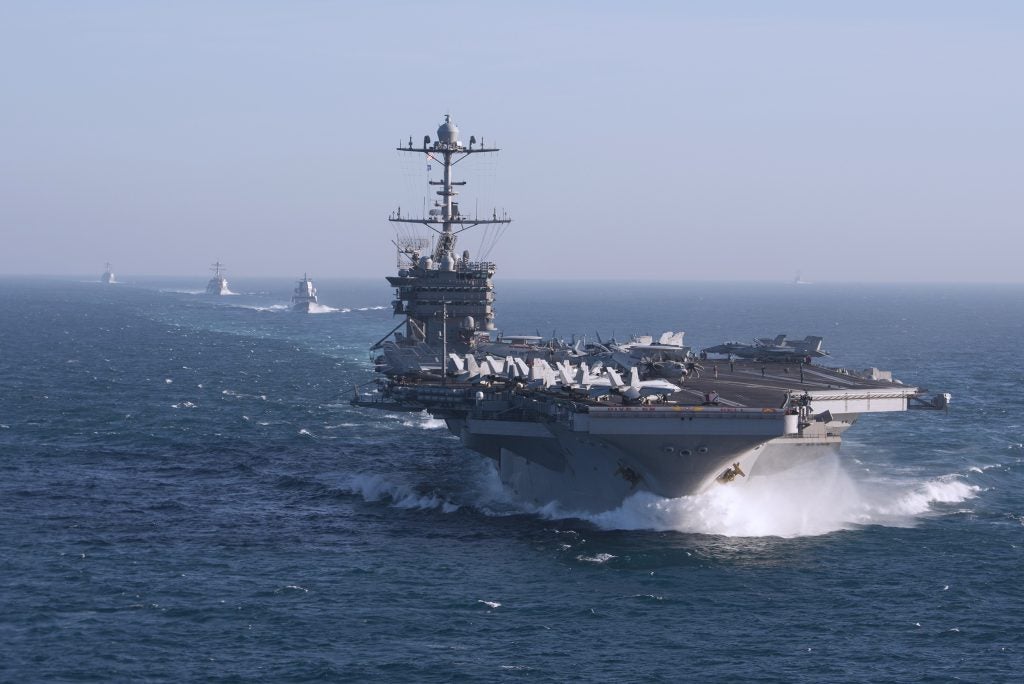NATO Announces Atlantic Command to Counter Russian Naval Threat
NATO has announced it will form a new Joint Force Command for the Atlantic to counter the mounting threat from Russia. At the same time the US Navy has confirmed the reestablishment of the formerly defunct US Second Fleet.
Johnny Michael, a Pentagon spokesperson, confirmed that the new NATO command would be the “linchpin of trans-Atlantic security”. And that “the return to great power competition and a resurgent Russia demands that Nato refocus on the Atlantic to ensure dedicated reinforcement of the continent and demonstrate a capable and credible deterrence effect.”
According to a press release (04/05/18) the US Department of Defence has offered to host NATO’s new Atlantic Joint Force Command (JFC) at the Navy’s facilities in Norfolk Virginia. The press release stated:
“The new JFC-Norfolk will ensure that NATO can successfully conduct operations across the full spectrum of Alliance missions in the trans-Atlantic region in the northern Atlantic.
The future Atlantic-oriented JFC represents part of the ongoing NATO effort to adapt its command structure to ensure that the Alliance can meet the challenges in today’s security environment. It will strengthen NATO’s deterrence and defense posture, and its ability to project stability beyond its borders.”
Despite the offer NATO has not yet confirmed the location of the new command and is expected to make a final determination on the location in the summer of 2018.
The US Navy’s Second Fleet was officially disbanded in September 2011, and has been on the inactive numbered fleet list ever since. This was originally done to make cost savings and enable to funding of additional ships. Elements of the Second Fleet were reorganised and formed part of the US Fleet Forces Command. The news of the Second Fleet’s reestablishment came during a change of command ceremony for the Fleet Forces Command when Chief of Naval Operations, Admiral John Richardson, announced the reformation of the Second Fleet on the 4th May. This was later confirmed in a Navy press release (04/05/18):
“Second Fleet will exercise operational and administrative authorities over assigned ships, aircraft and landing forces on the East Coast and northern Atlantic Ocean. Additionally, it will plan and conduct maritime, joint and combined operations and will train, certify and provide maritime forces to respond to global contingencies. Commander, 2nd Fleet will report to USFF.”
Admiral Richardson explained that “our National Defense Strategy makes clear that we’re back in an era of great power competition [with both China and Russia] as the security environment continues to grow more challenging and complex.” Richardson confirmed the Second Fleets Russian focus saying “today, we’re standing up Second Fleet to address these changes, particularly in the north Atlantic.”
Richardson confirmed to DefenseNews that the fleet is:
“going to be very tailored to the mission — high end blue water force elements. We’re focused on effectiveness here, so I don’t think it’s going to be a tremendous cost burden, and what you get is this operational focus on high-end in the Atlantic, that will be worth every molecule of effort that we spend.”
The reformed fleet’s HQ would initially stand up as a 15-person cadre with this expanding rapidly to around 200 as the reestablishment continues. There is no word yet on who will command the fleet and what ships and assets it will be made up of.

